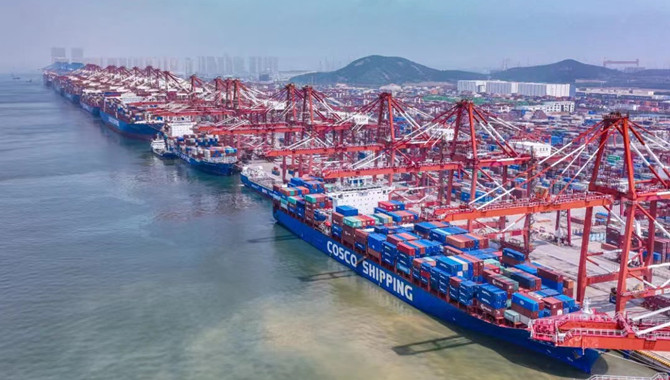Rates for shipping containers from east Asia and China to the US were largely stable this week, an indication that ocean demand is in the process of normalising from the sustained surge experienced over the past two years.
According to online freight shipping marketplace and platform provider Freightos, the normalisation of import volumes and the related easing of congested US ports are the major contributors to the steady container rates.
Judah Levine, head of research at Freightos, said the build in inventories and the slowing of some US consumer demand in the second half of 2022 has practically eliminated the mini surge in volumes and spot rates typically seen ahead of the Lunar New Year.
“This difference may likewise account for Asia-US West Coast rates being 11% lower than in January 2020 when – despite the first signs of the pandemic – prices climbed ahead of the holiday,” Levine said.
Rates from Asia to the US East Coast are also down significantly from the same week a year ago, Levine said, noting the decrease of 84% year on year.
The Drewry World Container Index shows rates from China and east Asia have also levelled off on routes to Europe, with the Shanghai to Genoa route ticking slightly lower this week and rates on the trade lane from Shanghai to Rotterdam edging slightly higher.
The National Retail Federation (NRF) estimates that the pandemic-driven surge is likely over, as evidenced by December volumes being down by 10% from the same month a year ago.
But the NRF anticipates volumes to gradually increase going into the second half of the year.
“Ports have been stretched to their limits and beyond but are getting a break as consumer demand moderates amid continued inflation and high interest rates,” Jonathan Gold, NRF vice president for supply chain and customs policy, said.
Congestion at West Coast parts has largely dissipated, but there are some lingering backlogs at US Gulf and East Coast ports, although the number of vessels waiting to unload at these ports has also dwindled.
According to the most recent operation update from Hapag-Lloyd, the backlog at the port of Savannah, Georgia, is down to 13 ships, with waiting times one-to-two days for Class 1 vessels, four days for Class 1.5 ships and up to eight days for Class 2 vessels.
There were as many as 32 vessels in the queue as of late November-early December.
As of 6 January, there were no vessels waiting for a berth at the Port of New York, and Port Houston had only six container ships at anchor waiting for a berth.
The Marine Exchange of Southern California (MESC) said West Coast storms this week that included gusts of up to 30 knots did not affect operations.
However, the Coastal Data Information Program at the University of California-San Diego noted record-high waves from an extratropical cyclone in the northeast Pacific, so ports are likely remaining on alert.
Container ships are relevant to the chemical industry because while most chemicals are liquids and are shipped in tankers, container ships transport polymers such as polyethylene (PE) and polypropylene (PP), which are shipped in pellets.
Source: Hellenic Shipping News






